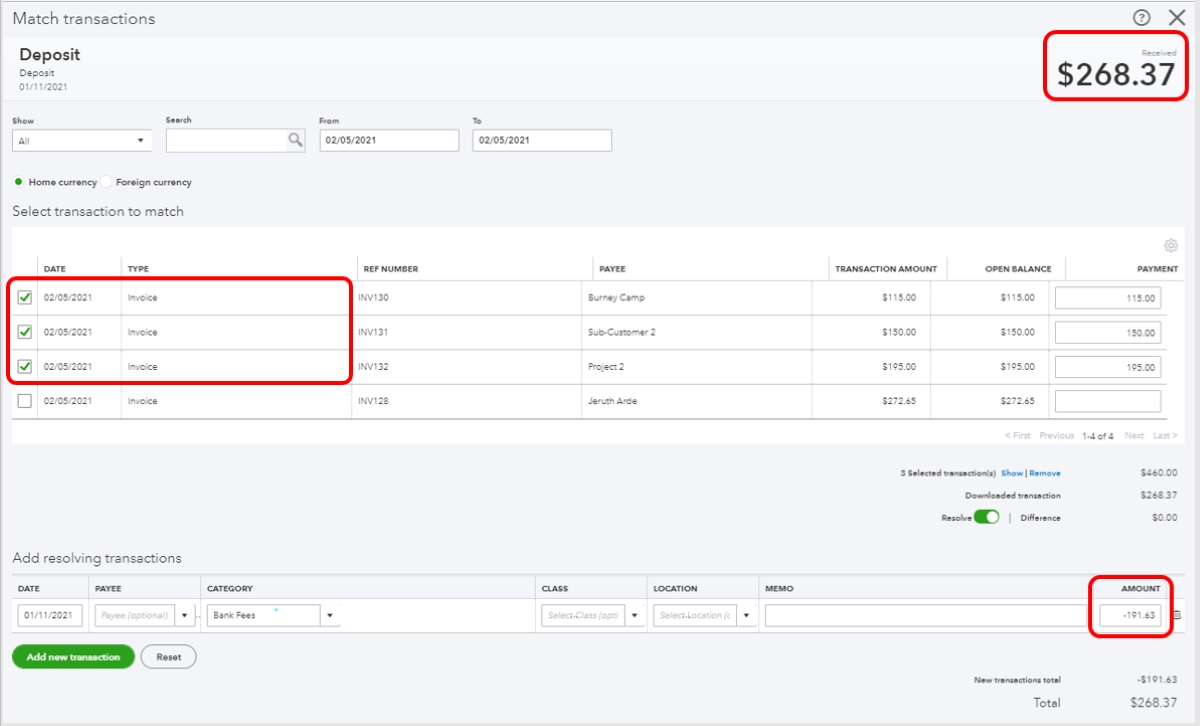

Finance
How Do Life Insurance Companies Make Money?
Published: October 15, 2023
Discover how life insurance companies generate profits through various financial strategies and investments. Gain insights into the finance behind these companies.
(Many of the links in this article redirect to a specific reviewed product. Your purchase of these products through affiliate links helps to generate commission for LiveWell, at no extra cost. Learn more)
Table of Contents
Introduction
Life insurance is a financial product that offers protection to individuals and their loved ones in the event of unexpected death. While its primary purpose is to provide a death benefit, life insurance companies also play a crucial role in the overall financial market. They generate revenue through various means, ensuring their financial stability and the ability to fulfill their obligations.
Life insurance companies operate on a simple principle: the premiums paid by policyholders must be sufficient to cover the potential claims they may face. They carefully assess risks and set premiums based on factors such as an individual’s age, health, occupation, and lifestyle. However, premium payments are just one part of the equation when it comes to how life insurance companies make money.
In this article, we will explore the different avenues through which life insurance companies generate revenue, providing a deeper understanding of their financial workings and sustainability. From premium payments to investment income, underwriting profit to policy surrenders, we will shed light on the various sources of income that contribute to the success of these companies.
Premium Payments
Premium payments are the foundation of revenue for life insurance companies. Policyholders pay regular premiums, typically on a monthly or annual basis, to maintain their life insurance coverage. The amount of the premium is determined by various factors, such as the policyholder’s age, health, and the type and amount of coverage they have.
The premium payments collected by life insurance companies are used to cover the costs associated with administering the policies, such as policy issuance, processing claims, and customer service. They are also set aside to cover potential future claims and expenses. The concept of pooling these premiums from policyholders helps spread the risk across a larger group, ensuring the financial viability of the company.
Life insurance companies employ actuaries who analyze large amounts of data to calculate the appropriate premium rates that align with the level of risk associated with an insured individual or group. Actuaries consider factors such as mortality rates, life expectancy, and historical claims data to determine these rates. By carefully assessing risk and setting premiums accordingly, life insurance companies ensure they have sufficient funds to meet their obligations without jeopardizing their financial stability.
It is important to note that premium payments may vary based on the type of life insurance policy. For instance, term life insurance policies have lower premiums compared to permanent life insurance policies. This is because term policies provide coverage for a specific period, whereas permanent policies have a lifetime coverage component, which requires higher premium payments.
Additionally, life insurance companies also offer options for policyholders to pay premiums in a lump sum or through installment payments. Lump sum premiums allow policyholders to make a single payment upfront, which typically offers discounts or savings compared to paying in installments. On the other hand, installment payments spread the premium amount over a set duration, making it more manageable for policyholders.
Premium payments constitute a significant portion of the revenue for life insurance companies. These payments not only cover the ongoing costs of maintaining policies but also contribute to the financial stability and profitability of the company.
Investment Income
One of the key sources of revenue for life insurance companies is investment income. When policyholders pay their premiums, the insurance company collects a pool of funds that can be used to generate additional income through various investment channels.
Life insurance companies have vast portfolios of investments, including stocks, bonds, real estate, and other financial instruments. These investments are carefully managed by teams of investment professionals who aim to achieve favorable returns while managing risk.
The income generated from these investments serves two important purposes for life insurance companies. Firstly, it helps to offset the costs associated with paying out policy claims and other administrative expenses. Secondly, it contributes to the overall profitability of the company.
Historically, life insurance companies have invested a significant portion of their funds in bonds. Bonds are considered relatively safe investments with predictable interest payments over a fixed period. This provides a stable source of income for the company.
In recent years, life insurance companies have diversified their investment portfolios to include a broader range of assets, such as equities, real estate, and alternative investments. This allows them to potentially achieve higher returns and diversify the risk within their investment portfolios.
It’s important to note that life insurance companies have regulatory restrictions on their investments to ensure financial stability and protect policyholders’ interests. These regulations are in place to prevent excessive risk-taking and maintain the financial health of the company.
Overall, investment income plays a critical role in the revenue stream of life insurance companies. By prudently managing their investment portfolios, these companies can generate additional income and strengthen their financial position.
Underwriting Profit
In addition to premium payments and investment income, life insurance companies also generate revenue through underwriting profit. Underwriting refers to the process of assessing risk and determining the appropriate premium rates for policyholders.
When a life insurance policy is underwritten, the insurance company evaluates various factors such as the applicant’s age, health, lifestyle, and occupation to assess the level of risk involved in providing coverage. Based on this assessment, the company determines the premium rate that the policyholder must pay.
If the life insurance company’s underwriting process proves to be accurate and effective, it can lead to underwriting profit. Underwriting profit occurs when the collected premiums from policyholders are higher than the claims paid out by the insurance company. This means that the insurance company has successfully managed its risk by accurately assessing the likelihood of claims.
However, underwriting profit is not guaranteed and can be influenced by various factors. If the insurance company miscalculates the risk or faces higher-than-anticipated claim payouts, it may result in an underwriting loss.
To mitigate risk, life insurance companies employ skilled underwriters who carefully evaluate applicants’ information and use statistical models and actuarial principles to determine the appropriate premium rates. They aim to strike a balance between offering competitive premiums to attract customers and ensuring the premiums cover potential claims and expenses.
Underwriting profit contributes to the overall revenue and financial stability of life insurance companies. When underwriting profits are consistent, it allows the company to maintain competitive premiums, invest in growth opportunities, and strengthen their financial position.
Policy Surrenders
Policy surrenders are another aspect of how life insurance companies generate revenue. A policy surrender occurs when a policyholder decides to terminate their life insurance policy before its maturity or expiration date. When this happens, the insurance company retains a portion of the accumulated cash value of the policy.
Life insurance policies, especially permanent life insurance policies, typically build cash value over time. This cash value grows through the accumulation of premiums and investment returns. Policyholders can access this cash value through policy loans or partial surrenders.
When a policyholder decides to surrender their policy, the life insurance company retains a surrender charge. This charge is a percentage of the policy’s cash value and serves to cover the administrative costs associated with policy termination.
Policy surrenders can occur for various reasons. Some policyholders may find that they no longer need the coverage, while others may face financial difficulties and need immediate access to the cash value. Whatever the reason, policy surrenders provide life insurance companies with a source of revenue.
It’s worth noting that policy surrenders can have both positive and negative financial implications for life insurance companies. On the positive side, surrender charges can contribute to the company’s profitability and help offset the costs associated with policy administration. On the negative side, a high number of policy surrenders may indicate a lack of customer satisfaction or confidence in the company’s products.
To mitigate the potential negative impact of policy surrenders, insurance companies often offer surrender value options that allow policyholders to access a portion of the cash value without completely surrendering the policy. These options can include reducing the death benefit, converting the policy to a paid-up status, or utilizing policy loans.
In summary, policy surrenders provide life insurance companies with an additional source of revenue. While they contribute to the company’s financial stability, it is important for insurance companies to balance the surrender charges with the need to maintain customer satisfaction and retention.
Policy Lapses
Policy lapses refer to the termination or cancellation of a life insurance policy due to non-payment of premiums by the policyholder. When policy premiums are not paid within the grace period specified in the policy contract, the insurance coverage ceases, and the policy lapses.
While policy lapses may not seem like sources of revenue for life insurance companies, they can still have an impact on their financials. When a policy lapses, the insurance company may retain a portion of the premiums paid by the policyholder up until that point.
Insurance companies set aside a portion of the premium payments they collect as reserves to cover potential claims and future policy benefit payouts. When a policy lapses, the insurance company may be entitled to keep a percentage of the premiums as profit or to cover administrative costs.
Policy lapses can occur for various reasons. Some policyholders may intentionally let their policies lapse due to changing financial circumstances or a shift in insurance needs. Others may unintentionally miss premium payments, resulting in a policy lapse.
It’s important to highlight that policy lapses can have negative consequences for the policyholder. When a policy lapses, the insured individual loses the protection provided by the life insurance policy and may face challenges in securing coverage in the future, particularly if their health has deteriorated.
To minimize policy lapses, life insurance companies often offer options to policyholders to prevent the policy from lapsing due to non-payment. These options may include utilizing policy loans or using accumulated cash value to cover premium payments. Such features help policyholders maintain their coverage and provide ongoing revenue for the insurance company.
While policy lapses are not an ideal situation for policyholders, they do contribute to the revenue stream of life insurance companies. It is in the best interest of both the policyholders and the insurance company to work together to avoid policy lapses and maintain the financial security and coverage provided by the life insurance policy.
Reinsurance
Reinsurance is an integral part of the business model for many life insurance companies. It is a risk management strategy wherein an insurance company transfers a portion of its risk to another insurance company, known as the reinsurer.
Life insurance companies often engage in reinsurance to mitigate their exposure to large and catastrophic risks. By ceding a portion of the risk to the reinsurer, the life insurance company reduces its potential financial liability in the event of a significant claim or a series of claims.
Reinsurance works in a way that the reinsurer agrees to reimburse the life insurance company for a specific portion of the claims incurred by the policyholders. In return, the life insurance company pays a premium, known as a reinsurance premium, to the reinsurer.
One significant advantage of reinsurance is that it allows life insurance companies to underwrite policies with higher coverage limits and assume greater risk capacity. This enables them to offer policies to individuals who may require larger insurance amounts or have higher-risk profiles.
Additionally, reinsurance also helps life insurance companies to diversify their risk exposure by spreading it across multiple reinsurers. This diversification reduces the concentration of risk and enhances the financial stability of the company.
The reinsurance market is highly specialized, and reinsurance agreements can be structured in various ways. Some common types of reinsurance arrangements include proportional reinsurance, where both the insurance company and the reinsurer share the risk and premium in agreed proportions, and excess-of-loss reinsurance, where the reinsurer agrees to cover losses above a certain threshold.
Reinsurance not only helps life insurance companies manage risk but also plays a crucial role in their financials. The reinsurance premiums paid by the insurance company contribute to their revenue stream, while the potential reimbursement from the reinsurer helps in mitigating the financial impact of large claims.
It is important to note that reinsurance does not absolve the life insurance company from its obligations to policyholders. The primary responsibility for paying claims ultimately rests with the insurance company, even when a portion of the risk is transferred to a reinsurer.
In summary, reinsurance is a fundamental component of the risk management strategy employed by life insurance companies. It allows them to manage their exposure to large risks, diversify their risk profile, and strengthen their financial position.
Other Revenue Sources
Aside from premium payments, investment income, underwriting profit, policy surrenders, and reinsurance, life insurance companies have various other revenue sources that contribute to their financial stability and growth.
One such source of revenue is fees and charges associated with policy administration. Life insurance companies may charge policyholders various fees for services such as policy changes, policy loans, late payments, or policy reinstatement.
Moreover, some life insurance companies offer additional products and services beyond traditional life insurance policies. These can include supplementary coverage options like riders for critical illness, disability, or long-term care. These additional products generate additional revenue for the company.
Furthermore, life insurance companies often offer annuity products. Annuities are financial products that provide a regular stream of income in exchange for a lump-sum payment or periodic premium payments. The income generated from annuity sales adds to the revenue of life insurance companies.
Another source of revenue for life insurance companies is group insurance. Group insurance policies are typically offered to employees of companies or members of associations. The premiums paid for these policies by the group members contribute to the revenue of the life insurance company.
Additionally, life insurance companies may also earn income from investment advisory services or asset management. Some insurance companies have investment divisions that provide investment advice and management services to individuals or institutional clients, generating additional fee-based revenue.
Lastly, life insurance companies may engage in strategic partnerships or joint ventures to diversify their revenue streams. These partnerships can include collaborations with other financial institutions, offering complementary financial products and services to customers.
While premium payments and investment income remain the primary revenue sources, the additional revenue streams from fees, annuities, group insurance, investment advisory services, and strategic partnerships contribute to the overall financial health and profitability of life insurance companies.
Conclusion
Life insurance companies employ a variety of strategies to generate revenue and ensure their financial stability. Premium payments from policyholders serve as the foundation of their income, covering ongoing administrative costs and potential future claim payouts. Investment income from carefully managed investment portfolios provides an additional source of revenue, helping to offset expenses and contribute to profitability.
Underwriting profit, achieved through accurate risk assessment and setting appropriate premium rates, adds to the revenue stream of life insurance companies. Policy surrenders and lapses, while not ideal, also contribute to their revenue as surrender charges and retained premiums from lapsed policies.
Reinsurance plays a crucial role in managing risk for life insurance companies, allowing them to transfer a portion of their risk exposure to reinsurers and diversify their risk profile. Other revenue sources, such as fees and charges, annuity sales, group insurance, investment advisory services, and strategic partnerships, further enhance the financial position and growth opportunities for these companies.
By effectively managing their revenue streams and mitigating risk, life insurance companies can maintain financial stability, offer competitive premiums, and fulfill their obligations to policyholders. It is through the combination of these revenue sources and prudent financial management that life insurance companies can thrive in the dynamic and ever-changing insurance industry.














